Kariuomenės buvimas Mangalsaloje
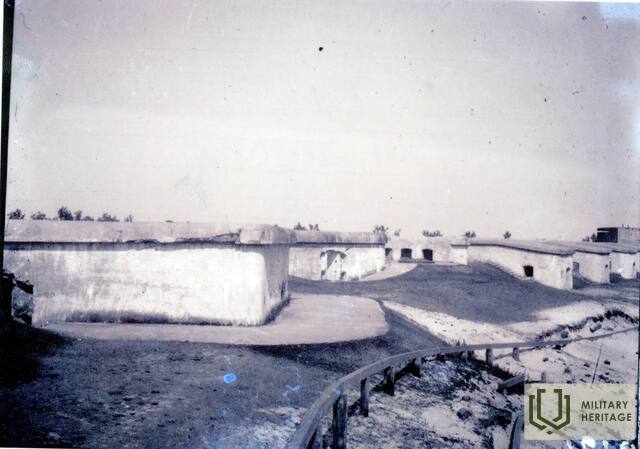
Atsiminimuose ryškūs įspūdžiai apie Latvijos kariuomenės buvimą Mangalsaloje. Aprašomi fortai, taip pat sapierų pastatytas gelžbetoninis įtvirtinimas. Atsiminimuose aprašomas karių kasdienis gyvenimas, gyvenimo ritmas ir iliustruojama Mangalsalos aplinka. Mangalsalos ir Latvijos armijos karių vizitas.
„(..) Kertame Dauguvos atšakos pylimą, kur prasideda įtvirtintas rajonas. Kelias vingiuoja į mišką. Nematyti nė vieno pėsčiojo. Tyla. Mišrių medžių miškas kvepia taip pirmapradžiu ir svaiginančiu būdu, kad norisi giliai, giliai įkvėpti. Sukame mažu, apaugusiu takeliu. Koks keistas, žemas, masyvus pastatas čia – miško viduryje! – Jį pastatė Sapirų pulkas. Jie vedžioja mane po šią mažą tvirtovę ir pasakoja apie ją šį bei tą. Į galvą ateina AI. Grino meistriškas apsakymas „Blokhausas“. Lieka keistas, pagarbą keliantis jausmas. Šiek tiek toliau pereiname į kitą kelio pusę. Seni fortai. Jų pilki paviršiai primena plačias milžinų nugaras. Aplink mus – šviesiai žali beržai, raudonalksniai ir tamsiai žali pušų keteros. Ir keista – vaikščiodamas tarp senų pilių griuvėsių, lipdamas senais bokštais – niekada neturėjau tokio... Jaučiuosi lyg stovėtum šalia šių nelabai aukštų, sunkių milžinų miško viduryje. Atrodo, kad negali kalbėti.“ arba garsiai čia juoktis, reikia čia tyliai ateiti, apsidairyti ir vėl tyliai išeiti. Dabar esame netoli stovyklų. Kitame forte sutinkame kareivius. Sargyba. Patrankos, uždengtos brezentais (dangalais, čia atrodo, kad dar viena maža šalis prasideda nuo savo įstatymų, taisyklių ir tvarkos. Dabar dažnai sutinkame kareivius, ir grupėmis, ir po vieną. Visi jie geros sveikatos ir įdegę saulėje. Koks nors miestietis, kuris didžiuojasi savo įdegiu – čia būtų tikrasis „blyškumas“. Kažkur jis išgirsta radijo garsiakalbį. Praeiname tinklinio aikštelę, čia vyksta karštos rungtynės. Vikrū, vikrūs judesiai. Tai tikrai buvo žaidimas su skraidančiu kamuoliu, nes kiek matėme – kamuolys neliečia žemės. Toliau iš jūros dūzgia du vaikinai – abu rudi kaip kavos pupelės: „Kokia žala, kad negyvenai didelio miško pakraštyje...“ Juose yra kažkas senųjų Žemgalės bajorų dvasios. Net jie patys plačiapečiai, gerokai suaugę. Praeiname pro štabo bataliono virtuvę. Vakarienė... verda dideliuose puoduose. Besišypsanti šeimininkė – tarsi geroji virtuvės dvasia – maišo puikų troškinį. Stovyklavietė pati savaime graži, bet matomas ir darbščių rankų darbas. Tvarkinga ant sunaikinimo ribos. Aplink palapines švaru; lygi veja ir gėlės. Malonų įspūdį palieka ir bataliono skiriamųjų ženklų atvaizdai iš spalvotų akmenų ir cemento liejinių. Jie yra savotiškas meno kūrinys. Už palapinių eilių yra keli maži nameliai, kuriuose gyvena karininkai ir instruktoriai su savo šeimomis. Prie kai kurių namų yra net nedidelis šviesus sodas ir pavėsinė. Baltai dengti stalai rodo, kad šių mažų vasarnamių gyventojai įpratę turėti azaidų po atviru dangumi. Stovykloje verda gyvenimas. Susirinko lankytojai. Sena motina atsisėda šalia mėlynakio kareivio. Ji atnešė kaimo kyšį – braškes. Pakreipusi žilą galvą, ji klausosi gyvos anūko kalbos. Jis turbūt kažką gero pasakoja, nes abu visą laiką juokiasi. Šiek tiek toliau, pavėsyje – šeimos idilė. Mažas berniukas ir jo motina... atvyko aplankyti tėvo į kaimą. Sūnus užlipo tėvui ant kelių. Jis pirštu baksnojo į savo skiriamuosius ženklus ir suskaičiavo juosteles: „Vienas, du...“ Tėtis turi du juosteles. Kartais prispaudė mažą mergaitę prie tėvo skruosto, bet paskui vėl apžiūrėjo skiriamuosius ženklus... Dar toliau – kareivis – dvi viešnios. Abi vienodai gražios ir linksmos. Jis atsisėdo tarp jųdviejų ir nežino, į kurią dažniau žiūrėti. O, kartais negerai, kai laimės per daug! Turime šiek tiek paklausti informacijos ir atsisukome į kareivį, ateinantį link mūsų. Jis turi mėlynas akis ir plačią, malonią šypseną. Jis kalba latgaliečių tarme. Ezeržemės sūnus. Jis kalba lėtai ir plačiai bei visą laiką šiek tiek sugėdęs šypsosi. Pro kareivines veda tikra gatvė su slenksčiu. Ten, namo tarpduryje, matyti virėjo balta kepurė ir prijuostė. Kažkur, už giraitės, jauni balsai dainuoja: „Kur tu augi, gražioji dukrele...“ Balsai skraido kaip vanagai į... medžių viršūnes, bet pačių dainininkų nematome. Lieknas kareivis ateina link mūsų, susikibęs už rankų su šviesiaplauke mergina. Jie neprataria nė žodžio, tik žiūri vienas į kitą su šypsenomis ir – matyt – nuostabiai supranta vienas kitą. Tegul kas nors kitas pasako, kad akys neturi savo kalbos; ypač kai šių akių savininkai jauni. Atvykome į autobusų stotelę, čia pastatytas šiaudinis grybas tiems, kurie laukia autobuso lietingu oru. Akis džiugina tvarkingai, tiesiomis eilėmis per kelią išdėstytas sodas. Tada išgirstame autobuso variklio riaumojimą. Penkios gražios valandos čia jau prabėgo – jūros dvelksme, medžių ošime – stebint žydintį, energingą jaunimą. Susirenka praeiviai ir tie, kurie pasilieka. Tamsiaakis artileristas lydi veržlią rausvaplaukę merginą. Jie dar turi daug, daug ką pasakyti ir papasakoti. „Rašyk, būtinai rašyk – palauksiu“, – čiulba mergina. Kareivis ant pirštų skaičiuoja dienas. „Vėliausiai iki trečiadienio tada turėsi...“ laiškas!" — Ranka ilgai liečia ranką. Jiems sunku išsiskirti. Šviesiaplaukis kareivis su ryškiais skiriamaisiais ženklais lydi savo motiną. – „Sveikinimai tėvui ir broliui – pasimatysime kitą sekmadienį!“ Autobusas beveik pilnas. Lieknas kareivis taip pat atsisveikina su savo šviesiaplaukiu draugu. Jie beveik nieko nebesako. Keli tylūs žodžiai. Jis nedrąsiai paliečia prie lūpų lieknus išvykstančio keleivio pirštus. Autobusas jau juda. Šviesiaplaukė mergina vos spėja įlipti. Maža, apvali kasininkė suerzintu žvilgsniu pažvelgia į ją ir sušnypščia: „Turėjai pakankamai laiko prieš atsisveikindama!“ Blondinė nieko nesako. Jos lūpose vis dar šypsena. Ji pamojuoja atsisveikindama. Ji turi gražias mėlynas akis, ramų, į save susikaupusį žvilgsnį. Ant dešinės rankos bevardžio piršto – subtilus žiedas su rubinu – sužadėtuvių žiedas. Ar stebėtina, kad atsisveikinti nėra taip lengva ir kasininkės kandžios pastabos nepastebimai prabėga pro šalį? Taip pat ir mažas berniukas, matytas stovykloje su mama autobuse. Mažylis turi... tiek daug klausimų, kad mama sunkiai susidoroja su dideliu jo smalsumu. „Tėtis šauna: puf!“ – girdžiu iš kito autobuso galo. Berniuko skruostai raudoni kaip rausvas obuolys. Mažoji kasininkė pradeda rinkti pinigus. Ji beveik vaikiška, bet vaidina „tikrą damą“. Suraukusi lūpas, ji užtikrintai paduoda mums bilietus, kita ranka sutvarkydama išdykėliškas garbanas ant kaktos. Viskas vyksta labai sklandžiai, ir jos maži piršteliai, rausvai lakuotais nagais, paduoda bilietus ir tiesia pinigus. Bet tada – nemalonus incidentas su keliais vyresniais kareiviais – Lāčplēčio karo ordino kavalieriais. Jie šioje linijoje kainuoja perpus pigiau, kiti kareiviai – šiek tiek brangiau už išskirtinę kainą. Pasirodo, kasininkė nežino Lāčplēčio karo ordino, nors ir laiko jį prie minėtų kareivių krūtinės, tempiasi ir ginčijasi, atkreipdama visų keleivių dėmesį. Mes visi susigėstame dėl mažosios „damos“ didelės burnos. Autobusas važiuoja sklandžiai ir siūbuoja kaip sūpynės. Matyti šiaurės pašvaistę... Raudona Upė... Netrukus važiuosime tiesiomis, „tiesiomis“ R3«as gatvėmis. Noriu pakelti ranką, kad juos pasveikinčiau – kad perduočiau jiems sveikinimus – palapinių mieste, apsuptame medžių ošimo ir jūros dvelksmo! (..)“
Atsiminimai buvo išspausdinti laikraštyje „Latvijas kareivis“, Nr. 126, 1938 m. Antraštė „Laipsnyje lankomi kareiviai stovykloje“.
Jūsų komentarai
Susijusi laiko juosta
Susijusios vietos
Latvijos armijos sapierių pulko įtvirtinimai
Jis yra Rygoje, Mangaļsaluose, Dauguvos žiotyse, jūroje priešais Daugavgryvą.
Latvijos armijos gelžbetoninis įtvirtinimas, arba kaponieris, buvo Latvijos armijos pakrantės gynybos sistemos elementas. Jį 1928 m. pastatė Sapieru pulko kariai. Jis buvo skirtas šaudyti į priešą kulkosvaidžiais dviem skirtingomis kryptimis. Jis buvo slaptas, sunkiai matomas ir nepažymėtas žemėlapiuose.
Po Latvijos Nepriklausomybės karo Mangaļsala buvo suformuota kaip įtvirtinta Latvijos armijos teritorija, skirta sustabdyti galimus priešo išpuolius, įskaitant desantinius išsilaipinimus. Buvo siekiama padidinti ginklų efektyvumą pasinaudojant specialiomis konstrukcijomis ir reljefu. Gelžbetoniniai įtvirtinimai galėjo apsaugoti kareivius ir ginklus mūšio metu, taip pat leido kontroliuoti teritoriją nedidelėmis pajėgomis. Mangaļsaloje buvo įsikūrusi Latvijos armijos radijo stotis ir pakrantės gynybos artilerija.
Šiandien Latvijoje galite pamatyti retą ir gerai išsilaikiusį įtvirtinimą. Pajūrio miško teritorijoje galite pamatyti ir kitų įtvirtinimų statinių. Vieta, turinti didžiulį potencialą ir vis dar laukianti atgimimo.
Garso gidas https://izi.travel/en/edbf-mangalsala-fortifications/en
Mangalsalos įtvirtinimai
Pakrantės įtvirtinimai yra Rygoje, Mangaļsaloje, Dauguvos žiotyse, priešais Dauguvgryvą. Čia galima pamatyti skirtingų armijų (rusų, latvių, vokiečių ir sovietų) pastatytus įtvirtinimus. Mangaļsalos įtvirtinimai buvo pastatyti siekiant ginti Rygos miestą nuo priešo laivynų. Ši teritorija ilgą laiką buvo strategiškai svarbi. Po Pirmojo pasaulinio karo Latvijos armija dar neturėjo stipraus laivyno. Jūrų siena buvo ilga, o pakrančių gynyba darėsi vis sunkesne užduotimi. Latvijos armija perėmė Rusijos imperijos pastatytus įtvirtinimus XIX a. pabaigoje ir XX a. pradžioje ir išplėtė gynybos sistemą. Dauguvgryvos ir Mangaļsalos artilerija apšaudydavo priešo laivus, bandančius įplaukti į Dauguvos žiotis, o atramos punktai Lielupės (Jūrmalos) ir Gaujos (Carnikavos) žiotyse stabdydavo priešo desantinius būrius. Taip pat buvo specialiai įrengtas šarvuotas pakrantės gynybos traukinys, kuris galėjo teikti artilerijos ugnį ir paramą Saulkrastų arba Jūrmalos kryptimi. Strateginių vietų įtvirtinimo tikslas buvo maksimaliai padidinti ginklų panaudojimą, pasitelkiant specialias konstrukcijas ir reljefo pranašumus. Pakrantės gynybiniai įtvirtinimai buvo išdėstyti didelėje teritorijoje, kad karo atveju būtų galima atremti priešo pastangas.
Garso gidas https://izi.travel/en/edbf-mangalsala-fortifications/en
Mangalsalos gatvė
XIX amžiaus pabaigoje Mangalsaloje pradėti statyti įtvirtinimai, o kartu su jais buvo sukurtas ir šis asfaltuotas kelias, nes sunkiasvoriams sunkvežimiams buvo praktiškai neįmanoma judėti sausu ir smulkiu Mangalsalos smėliu. Anksčiau asfaltuotas kelias vedė nuo Vecdaugavos užtvankos (čia įvažiuojama į Mangalsalą iš Vecākių pusės) iki pat armijos doko Dauguvos krante. Deja, laikui bėgant didelę dangos dalį pasisavino nesąžiningi asmenys, todėl šis kelias keliose atkarpose nebėra saugus važiuoti lengvaisiais automobiliais. Dalis asfaltuotos dalies kadaise buvo padengta asfaltu.
Geležinkelio atšaka ir platforma
Apie 1958 m. Mangalsaloje nuo Vecākių stoties buvo nutiesta speciali geležinkelio atšaka sovietų armijos reikmėms. Tai buvo patogiausias būdas į čia esančią karinę bazę atgabenti kuro, šaudmenų, šaunamųjų ginklų ir statybinių medžiagų. Dar anksčiau, nuo XX a. iki pat sovietmečio, per visą Mangalsalą ėjo siaurasis geležinkelis, kuriuo į patrankų vietas buvo gabenama šaudmenys. Vėliau buvo nutiesta rimtesnė geležinkelio atšaka, kirtusi Vecdaugavą per vieną iš dviejų – mažiausiai žinomų – Mangalsalos užtvankų. Pavyzdžiui, iš Vecākių pusės prieiti prie šios užtvankos nebėra įmanoma, nes vaizdą užstoja privati valda. Gamtoje matomas betoninis kalva buvo platforma. Kai dešimtojo dešimtmečio pradžioje sovietų kariuomenė paliko Latviją, šiuo geležinkeliu buvo gabenama 600 vagonų su maždaug 30 tonų šaudmenų. Sakoma, kad tuo metu tai buvo daroma taip skubotai ir nerūpestingai, kad „visa Ryga galėjo būti matoma ore“. Arba bent jau tam tikras Rygos rajonas. Netrukus po to geležinkelis buvo išardytas.
Uždari šaudmenų sandėliai, pastatyti šeštajame dešimtmetyje
Šeštajame dešimtmetyje toks bunkeris buvo pastatytas ir užpiltas žemėmis, kad potencialus priešas jo taip lengvai nerastų. Mangalsaloje iš viso yra keturi tokie pastatai, visi jie pastatyti 1953–1955 m. Sovietmečiu čia buvo laikoma amunicija – povandeninės minos, torpedos ir kt. Šiuo metu tai švariausias iš uždaro tipo sovietmečio amunicijos sandėlių, tačiau nuėjus toliau galima pamatyti ir didžiausią.
Dėmesio! Siekiant apsaugoti žiemojančius šikšnosparnius (visos rūšys yra saugomos), nuo spalio iki balandžio nesikelkite po žeme ir bunkeriuose.
Atviri šaudmenų sandėliai, žaibolaidžiai, šuliniai
Sovietmečiu į Mangalsalą buvo atgabenta tiek daug šaudmenų ir karinės įrangos, kad sandėliuose neužteko vietos, todėl didelę jos dalį teko laikyti po atviru dangumi. Patalpose buvo laikomi tik tie daiktai, kuriuos galėjo pažeisti drėgmė. Šis veiksmas taip pat rodo nerūpestingą sovietinės armijos požiūrį į bet kokį inventorių: aplink jį buvo įrengtas smėlio pylimas, iš kurio iki šiol išlikęs nedidelis kauburėlis, tačiau pats pylimas apsaugojo šaudmenis nuo gaisrų ir sprogimų. Jei šioje vietoje sprogtų raketa, sprogimo banga pasiektų pylimą ir nepasiektų toliau arba pasiektų daug mažesnį plotą. Netoliese yra gelžbetoninis stulpas – žaibolaidis! Tokie stulpai leido apsaugoti šaudmenis nuo žaibo smūgių. Panašių stulpų galima pamatyti ir kitose vietose. Matyti ir buvę vandens šuliniai, kad prireikus būtų galima ką nors užgesinti. Apskritai informacija apie Mangalsalos šaudmenų sandėlius buvo labai slapta – net senuose sovietiniuose kariniuose žemėlapiuose šios vietos pažymėtos kaip pionierių stovyklos. Maždaug 50 metrų už pylimo yra dar vienas betoninis bunkeris.
Sviedinių sandėliai
Šis pastatas buvo pastatytas 1876–1885 m., kai čia valdė caras Aleksandras II, o vėliau – caras Aleksandras III. Verta atkreipti dėmesį į pastato fasadą su karnizais, langų angomis ir kt. dekoratyvinėmis formomis. Šis pastatas buvo naudojamas kaip sandėlis, kuriame buvo laikomi patrankų sviediniai. Maždaug už 300 metrų nuo čia yra dar vienas toks sandėlis, kuriame netgi yra gražios, lenktos langų grotos. Panašių raudonų plytų karinių pastatų vis dar galima rasti Latvijoje – pavyzdžiui, Liepojos Karostoje. Visi raudonų plytų pastatai Mangalsalos teritorijoje buvo pastatyti maždaug tuo pačiu metu. Tuo metu politinė padėtis Europoje buvo sudėtinga, o Rusijos imperija pradėjo kariškai stiprinti savo vakarinę sieną. Pastatas turi dvigubą išorinę sieną, o oras cirkuliuoja tarp sienų, o tai ne tik sukuria papildomą vėdinimą, užtikrindamas reikiamą temperatūros ir drėgmės lygį pastate, bet ir gali amortizuoti sprogimą. Didelio sprogimo atveju išorinė siena sugriūva, bet vidinė lieka nepažeista, apsaugodama tai, kas yra pastato viduje. Ant bunkerių, esančių kitoje Mangaļsalo gatvės pusėje, buvo įrengtos minosvaidžių pozicijos. Laisvos Latvijos laikais – 1926 m. – vietoj minosvaidžių buvo pastatyti priešlėktuviniai pabūklai, arba ratukais judantys pabūklai! Netoli čia auga viena storiausių pušų Rygoje. Be to, ji ne tik stora ir didelė, bet ir sužeista – ant pušies kamieno galima rasti kulkų žymių. Kokiose kovose pušis nukentėjo – nežinoma!
Dėmesio! Siekiant apsaugoti žiemojančius šikšnosparnius (visos rūšys yra saugomos), nuo spalio iki balandžio nesikelkite po žeme ir bunkeriuose.
Cheminių medžiagų sandėlis ir aplinkkelis
Šis bunkeris buvo pastatytas 1955 m. – sovietų okupacijos metu. Takas aplink šį pastatą kadaise buvo aplinkkelis, aptvertas dviguba spygliuotos vielos tvora. Už jo ėjo sargybiniai ir stebėjo, ar prie objekto nesiartina koks nors pašalinis asmuo. Kai kuriuose šaltiniuose šis pastatas minimas kaip šaudmenų sandėlis, kituose – kaip cheminių medžiagų saugykla. Teigiama, kad čia netgi buvo branduolinių raketų, tačiau radiacijos pėdsakų nerasta. Viduje visiškai tamsu, bet vėliau matoma šviesa. Kadaise čia buvo vėdinimo sistema. Tai vienintelis pastatas Mangalsaloje, kuriame buvo ventiliacija. Kroviniai čia buvo vežami vagonais geležinkelio linija. Akustika labai gera – kadaise čia net repetavo jaunimo choras! Tačiau čia ir ten ant pastato sienų iškabinti grafiti meno kūriniai.
Dėmesio! Siekiant apsaugoti žiemojančius šikšnosparnius (visos rūšys yra saugomos), nuo spalio iki balandžio nesikelkite po žeme ir bunkeriuose.
Latvijos armijos dėmesio centras
Savotiška pasagos formos betoninė konstrukcija kadaise buvo prožektoriaus vieta. Tuo tarpu už šimto metrų link Vecākių, nedideliame betoniniame bunkeryje sėdėjo prožektoriaus vairininkas ir stebėjo, ar iš pakrantės pusės nesiartina koks nors neleistinas asmuo. Medžių čia praktiškai nebuvo, todėl visa teritorija buvo aiškiai matoma. Jei užpuolikas pradėtų šaudyti į šviesos šaltinį, vairininkas būtų visiškai apsaugotas – paskendęs tamsoje ir betone. Šį prožektoriaus tašką 1928 m. pastatė Latvijos armija, toliau pritaikydama jau militarizuotą Mangaļsalą savo poreikiams. Vėliau, sovietų okupacijos metu, prožektorius galėjo būti naudojamas ir stebint bet ką, kas ketino bėgti priešinga kryptimi į „laukinius vakarus“. Išvykti iš šalies be leidimo buvo draudžiama. Be saugumo, pakrantės smėlis taip pat buvo suariamas, kad būtų galima pamatyti nelegalių imigrantų ar pėsčiųjų pėdsakus.
Pakrantės artilerijos baterija
Tai didžiausias karinis statinys Mangalsaloje, pradėtas statyti 1912–1916 m. Bunkerio sienos buvo kelių metrų storio, o nuo jūros jį saugojo smėlio seklumos. Pirmojo pasaulinio karo metu vokiečių laivynas į Rygą neatplaukė tik čia dislokuotų patrankų dėka. 1917 m. rusai patys pasitraukė iš Rygos ir, išvykdami, susprogdino dalį bunkerio. Latvijos nepriklausomybės laikotarpiu – 1930-aisiais – ir vėliau sovietmečiu ši baterija buvo renovuota ir išplėsta – perstatyta patrankų platforma ir sumontuotos naujos patrankos. 1941 m. – Antrojo pasaulinio karo metu, rusai vėl susprogdino šią bateriją, bijodami, kad į Latviją gali įžengti vokiečių kariuomenė. Pirmosios patrankos šaudė maždaug 12–15 kilometrų atstumu, tačiau naujesnės galėjo pataikyti į taikinį iki 40 kilometrų atstumu. Yra užrašas: „Pastatė jūreiviai“ – pastatyta jūreivių 1946 m. Bunkerio rūsyje buvo šaudmenų rūsiai, kuriuose buvo laikomi pabūklams reikalingi sviediniai. Sienose buvo specialūs liukai, pro kuriuos buvo galima paduoti sviedinius, kad kovos sąlygomis greičiau būtų galima užtaisyti pabūklus. Dabar čia yra ilgiausias karinis tunelis Mangalsaloje – apie 100 metrų ilgio koridorius. Pavasarį dalis bunkerio linkusi užtvindyti! Septintajame dešimtmetyje vystėsi aviacijos technologijos, buvo išrastos raketos ir oro gynybos sistemos, o ši baterija su visais savo pabūklais – kadaise tokia bauginanti ir galinga – tapo niekam nereikalinga.
Dėmesio! Siekiant apsaugoti žiemojančius šikšnosparnius (visos rūšys yra saugomos), nuo spalio iki balandžio nesikelkite po žeme ir bunkeriuose.
Rygos garnizono armijos palapinių stovykla
Dabar čia auga krūmynai ir tankmės, tačiau praėjusio amžiaus ketvirtajame dešimtmetyje čia buvo įsikūrusi Rygos garnizono armijos vasaros stovykla. Kai kuriose vietose vis dar galima pamatyti tai, kas atrodo kaip stačiakampiai pylimai. Šiose vietose stovėjo kareivių palapinės, išdėstytos keturiomis ilgomis eilėmis, o viduryje – mažos gatvelės. Eilių galuose stovėjo garnizono dalinių logotipai – jie buvo lieti iš betono, o papuošalai ir užrašai – iš mažų, spalvingų akmenėlių. Pylimai aplink palapines buvo reikalingi ne tik drėgmei sulaikyti, bet ir kariniams tikslams. Jei į Mangaļsalą įžengdavo desantininkai, jie būdavo naudojami kaip apkasai, kurių priedangoje teritorija būdavo saugoma nuo priešo. Nors čia vyko tikros karinės pratybos, ore tvyrojo romantiška idilė, kuri matoma ir to meto nuotraukose. Jaunimas žaidė tinklinį. Karininkų namelių kiemuose buvo sutvarkytos pavėsinės ir gėlynai. Savaitgaliais kareivius lankydavo jų artimieji, atnešdami krepšius braškių ir šviežios duonos. Didžioji dalis maisto buvo valgoma lauke, prie stalų, gryname ore.
Armijos miestelis
Šiame rajone 1920-ųjų pabaigoje ir 1930-ųjų pradžioje Latvijos armija pastatė armijos stovyklą karininkams ir kareiviams, dirbusiems Mangalsaloje. Vėliau stovykla kartu su Mangalsalos karine baze tapo Sovietų Sąjungos nuosavybe. Čia gyveno civiliai gyventojai be jokio statuso, tačiau vėliau buvo įrengti socialiniai butai mažas pajamas gaunantiems žmonėms. Dešinėje pusėje buvo futbolo aikštė ir maži sodai, tačiau laikui bėgant jie virto pievomis ir pelkėmis. Vėliau čia atsirado privatūs namai ir automobilių servisas. Iki 1960-ųjų Mangalsala visai nebuvo Rygos, o Mangalos parapijos dalis. Tuo metu žmonės čia vertėsi žvejyba arba dirbo armijos bazėje, nes žemės ūkis buvo praktiškai neįmanomas – dirbamos žemės plotas Mangalsaloje tesiekia 3,8 %. Kadaise per stovyklą palei Mangalsalos gatvę ėjo siaurasis geležinkelis, tačiau pati gatvė buvo asfaltuota. Dabar danga paslėpta po asfalto sluoksniu. Kelio gale yra uosto teritorija ir buvusi karinė prieplauka. Kadaise ten buvo švartuojami kariuomenės laivai, o tarp jų buvo nutiesti pėsčiųjų tiltai.
Galima pamatyti iš išorės, einant Mangaļsalo gatve.
Mokomųjų torpedų liekanos
Liudininkų pasakojimais, sovietų armija Mangalsaloje labai nerūpestingai laikė šaudmenis, o tai galėjo būti žmogaus sukeltų nelaimių priežastis. Šaudmenys šioje vietovėje buvo saugomi nuo carinės Rusijos laikų – tiek uždaruose, tiek atviruose sandėliuose. Sovietmečiu čia buvo SSRS Baltijos laivyno šaudmenų ir jūrų minų sandėliai. Daugavgryvoje, kaip manoma, buvo torpedų dirbtuvės.
„Mangalių miestelyje, Rygos rajone, kur buvo mūsų minų ir torpedų sandėlis, buvo laikoma 400 tūkstančių tonų sprogmenų. (...) Be to, sandėlyje buvo laikoma šimtai torpedų, jūrinių minų, sprogstamųjų užtaisų ir visokių kitų sprogstamųjų atliekų. Taip pat buvo užtaisų detonavimo dirbtuvės. Ir visa krūva šaulių ginklų – nuo SKS karabinų iki „Parabellum“ pistoletų“, – rašo buvęs karininkas – antro rango kapitonas Andrejus Riskinas.
Šiais laikais miške matomos „torpedos“ yra mokomųjų torpedų korpusai, išlieti iš betono.
Rytinė (Mangalsalos) prieplauka
Abu Dauguvos prieplaukos yra glaudžiai susijusios su kariniais įvykiais ir istorija. Jos buvo pastatytos XIX amžiaus pabaigoje, siekiant sumažinti upės žiočių užsikimšimą ir reguliuoti tėkmę, taip užtikrinant laivybą ir kartu – Dauguvos žiočių apsaugą. Jų strateginė svarba buvo siejama su Rygos, kaip svarbaus uosto ir karinės bazės, apsauga.
Pirmojo pasaulinio karo ir Latvijos nepriklausomybės karo metu Dauguvos upės žiočių teritorija buvo karinių operacijų zona. Antrojo pasaulinio karo metu prieplaukos turėjo didelę strateginę reikšmę, nes padėjo kontroliuoti privažiavimą prie Rygos iš jūros.
Pirsas pastatytas ant medinių polių konstrukcijos, dengtos akmenimis. Pirsas yra maždaug vieno kilometro ilgio.
Nors šiandien Dauguvos prieplaukos daugiausia naudojamos kaip pasivaikščiojimo zona ir istorinė vieta, jų istorinis ryšys su karine strategija ir jūros kelių apsauga yra svarbus Latvijos istorijos aspektas.
Dėmesio! Prieplaukos paviršius gali būti slidus. Lankytis joje pučiant stipriam vėjui ir audrai pavojinga!




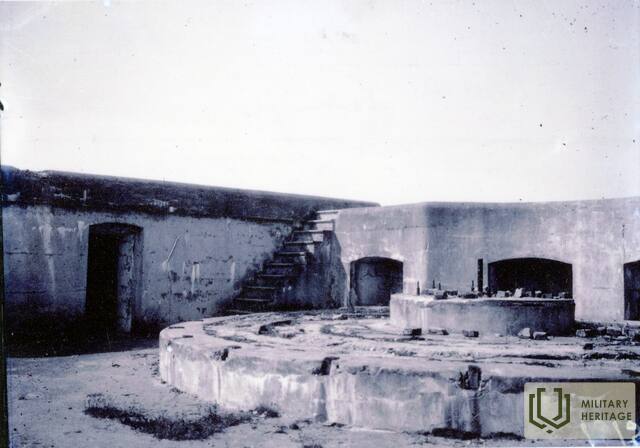
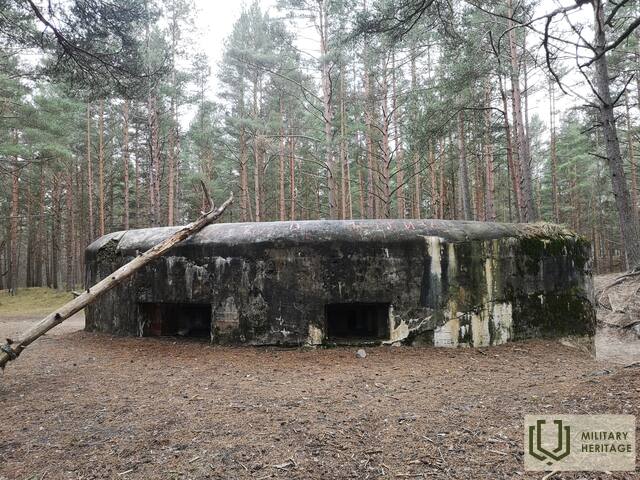
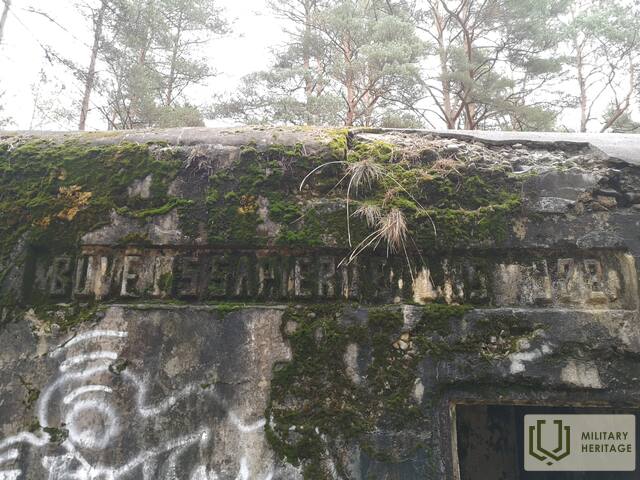

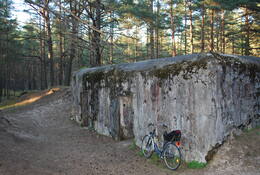
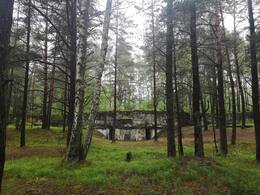
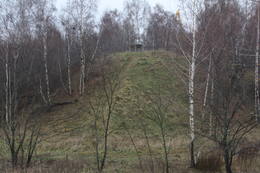
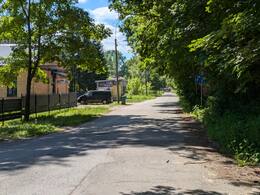
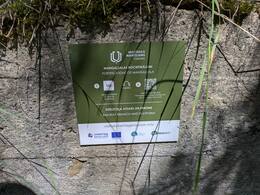
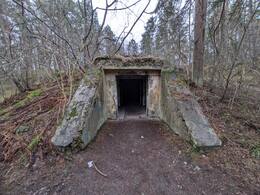
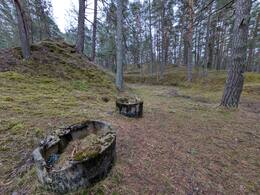
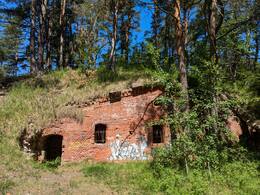
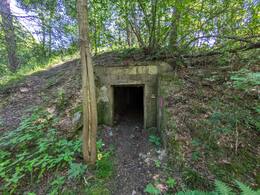
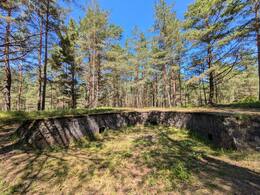
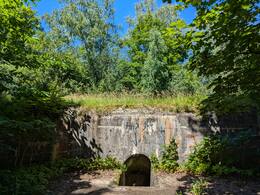
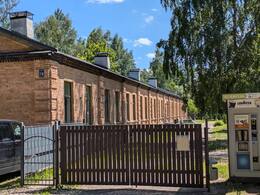
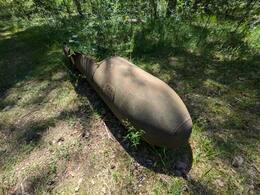
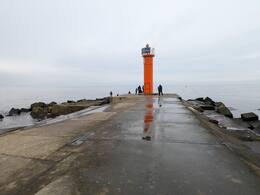
LKM nuotraukos - Liepojos tvirtovės 6-oji baterija, ne ant Mangalsalos.